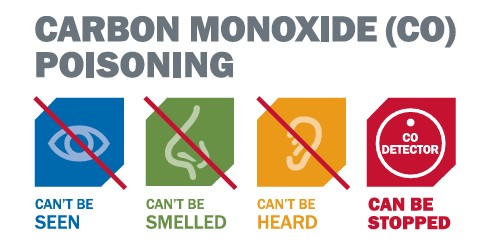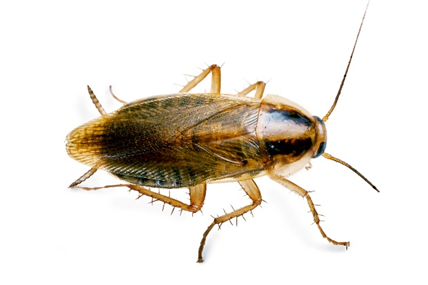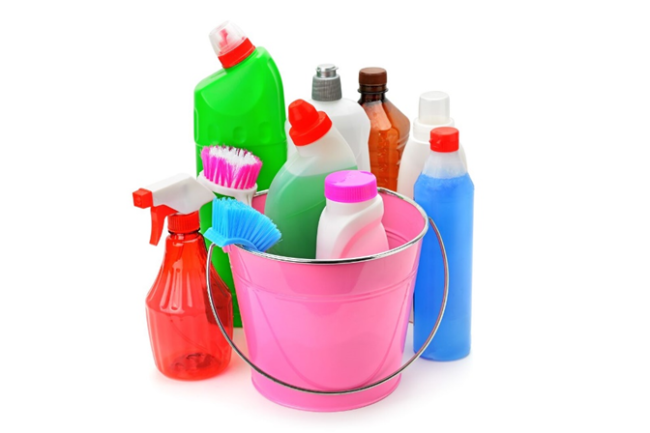Indoor Air
We spend about 90% of our time inside, so indoor air quality is a major concern for all of us. It can be unhealthier and more polluted than outdoor air. Exposure to indoor air pollutants can have health effects that may be experienced soon after exposure or years later.
Examples of indoor air pollutants:
- Allergens (pet dander, dust & dust mites, cockroaches, second hand smoke)
- Asbestos
- Carbon Monoxide
- Chemicals
- Mold
- Radon
- Volatile Organic Compounds
Reactions may occur shortly after an exposure to mold, allergens, cleaning chemicals or pesticides. Irritation to the eyes, nose and throat, headaches, dizziness, or asthmatic episodes are among potential reactions. A person’s sensitivity, age, and pre-existing health conditions will determine the degree of reaction. Many of these symptoms may clear up after removal of the irritant.
Other health effects may show up years after exposure to indoor pollutants. These may include respiratory diseases, heart disease and cancer. Some pollutants may cause long-term effects such as asbestos, radon, or second-hand smoke.
Allergens
The job of the body’s immune system is to identify and destroy germs (bacteria or viruses) that make you sick. When an allergen attacks the body, a range of allergic reactions from skin irritation or watery eyes to potentially life-threatening anaphylaxis may occur.
You can come in contact with allergens by touching, eating or breathing them in.
Animal Dander
Dander is dead skin shed from animals. Pets can trigger allergy and asthma attacks. Keep them out of sleeping areas and off of upholstered furniture. Vacuum and clean carpets, rugs, and their sleeping areas often. Wash hands and face after handling the pet or being in a house with a pet as dander sticks to clothes and hands.
Carbon Monoxide
Carbon Monoxide (CO) is a colorless, tasteless, and odorless gas. Every year, hundreds of people in the United States die from CO poisoning. CO is generated from combustion appliances, meaning those that use gas, oil, kerosene, charcoal or wood to produce heat.
The number of CO poisonings increase in the winter months when people may be using other sources of heat (fuel-burning stoves or heaters) and do not have fresh air coming into the home. They may also occur during power outages when using portable generators.
Generators should only be used outdoors and away from any window, door or vent leading into the home.
Signs of CO poisoning:
Headache
Nausea
Tiredness/fatigue
Dizziness.
Extended exposure can cause brain damage and heart problems. High levels of exposure can cause loss of consciousness, coma and death.
DON’T leave your car idling in the garage, even with the door open
DON’T use gas-powered equipment or grills indoors or any enclosed space
DON’T use your gas oven to heat your home
DO install a CO detector on each level of your home
DO have your furnace and other heating appliances checked annually
Resources
Cockroaches
Cockroaches thrive in warm, dark, moisture environments. A cockroach is considered a scavenger because it can and will consume any food source. A cockroach problem in the home may not be noticed until it is excessive.
The average life span of a cockroach is one year. In that time, a female may have up to 8 egg cases, each case containing 40 eggs; that equals 320 offspring in one lifetime, or one year.
To limit cockroach problems:
- Keep all food, including pet food, and garbage in closed containers
- Do not leave dirty dishes or food container out
- Eat only in the kitchen/dining room
- Thoroughly clean kitchen floors with a household cleaner and clean rinse water to remove any food or cockroach dust
Clean up clutter
Dust & Dust Mites
Household dust is a mixture of shed human skin cells, dander, fabric fibers, old spores, bacteria, dirt and dust mites. Dust may irritate your respiratory passages. To control dust, it is important to clean regularly:
- Vacuum carpets and fabric upholstery
- Dust surfaces with a damp cloth
- Mop floors
- Wash linens
Dust mites are not visible to the naked eye. They live in bedding, couches, carpet, stuffed toys and old clothing. Dust mites feed on the dead skin that falls off people and animals. Areas where people spend much time, like a bed and pillow or favorite plush chair/couch, are prime locations for dust mites. When dust mites grow, they shed their skin. This skin and their feces are what cause allergic reactions in people.
Ways to control dust mites:
- Wash all bedding and stuffed toys at least every 2 weeks in hot water
- Enclose mattresses and pillows in hypo-allergic coverings
- Remove carpets, replacing them with wood or tile floors
- Replace curtains and drapes with plastic shades/blinds
Replace upholstered furniture with wood or plastic furniture
Household Chemicals & Pesticides
Household chemicals and pesticides are not hazardous if they are used properly. This means following the manufacturer’s directions and storing them correctly.
Never leave chemicals where a child can see them or reach them.
This can lead to vomiting, burns, dizziness, respiratory issues, or death.
NEVER MIX CHEMICALS TOGETHER.
In case of an accident, immediately call the Poison Control at 1-800-222-1222
Secondhand Smoke & E-cigarette aerosols
Smoke from tobacco or marijuana products and the exhaled smoke from the person release chemicals into the air. Fumes released from e-cigarettes contain aerosols. People around the smoker/vapor are exposed to these chemicals; this exposure is called secondhand.
Even after a person stops smoking/vaping, those chemicals can remain indoors for a long period of time and build up on walls, furniture, fabrics, etc.
The more secondhand smoke you are exposed to, the higher the level of these harmful chemicals in your body. To help protect children and others from secondhand smoke, do not smoke or allow others to smoke inside your home or car.
Resources
- Control Indoor Allergens to Improve Indoor Air Quality | AAFA.org
- Interactive Tour of the Indoor Air Quality Demo House | US EPA
Volatile Organic Compounds (VOC)
Volatile organic compounds (VOC) are released as gases from certain solids or liquids. Some of these chemicals can have adverse health effects:
- Eye/nose/throat irritation
- Headache
- Nausea
- Damage to liver/kidney/nervous system
- Cancer
VOC are released into the air while you are using them, and even when stored. Some household products releasing VOCs include:
- Paints, paint strippers
- Wood preservatives
- Aerosol sprays
- Cleaners and disinfectants
- Air fresheners
- Pesticides
- Craft supplies – glues & adhesives, permanent markers
- New carpeting & glue
- New pressed wood furniture
Make sure there is plenty of ventilation when using these products, when remodeling, and when storing them. Consider purchasing low or no VOC products, or buying them in small quantities to lessen the effects.






